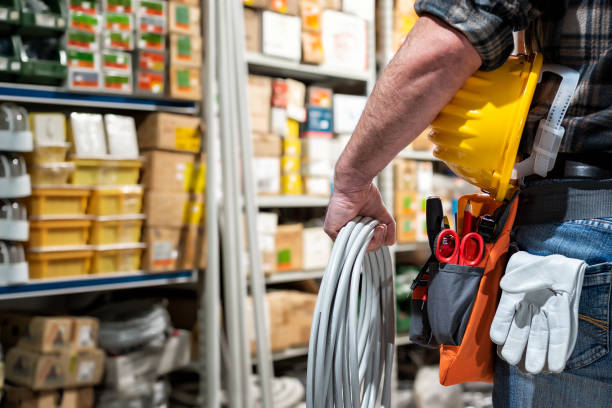Thermals - Meteoblue
페이지 정보
작성자 Bernadette 작성일25-09-26 03:59 조회18회 댓글0건관련링크
본문
 The thermal and soaring forecast contains the most dense atmospheric data we ever put in a meteogram to forecast flight situations for paragliding, electric shears soaring and ballooning. The carefully assembled graphs include detailed information about floor conditions, stability indices, lapse fee, humidity, clouds and winds. All meteograms present hourly data for 3 days. Yellow areas indicate daylight. 2m temperature and 2m dew point: Equivalent with measurements 2 meters above floor. The 2m dew level temperature signifies how much water is in the air at ground level, from the place potential thermals would start. A larger difference between temperature and dew point means much less humidity and thus a higher cloud base. Fahrenheit is not yet supported. Precipitation: Total precipitation (rain, convective and snow) in millimeter rain gauge. As it takes plenty of heat to evaporate water, wet ground heats slower and is thus much less favorable for thermals than dry ground. Also, cordless Wood Ranger Power Shears warranty Wood Ranger Power Shears thermals begin earlier in dry circumstances, when no rainfall happened earlier than. 10m wind and 80m wind: Wind speeds in 10 and 80 meters above ground in kilometres per hour.
The thermal and soaring forecast contains the most dense atmospheric data we ever put in a meteogram to forecast flight situations for paragliding, electric shears soaring and ballooning. The carefully assembled graphs include detailed information about floor conditions, stability indices, lapse fee, humidity, clouds and winds. All meteograms present hourly data for 3 days. Yellow areas indicate daylight. 2m temperature and 2m dew point: Equivalent with measurements 2 meters above floor. The 2m dew level temperature signifies how much water is in the air at ground level, from the place potential thermals would start. A larger difference between temperature and dew point means much less humidity and thus a higher cloud base. Fahrenheit is not yet supported. Precipitation: Total precipitation (rain, convective and snow) in millimeter rain gauge. As it takes plenty of heat to evaporate water, wet ground heats slower and is thus much less favorable for thermals than dry ground. Also, cordless Wood Ranger Power Shears warranty Wood Ranger Power Shears thermals begin earlier in dry circumstances, when no rainfall happened earlier than. 10m wind and 80m wind: Wind speeds in 10 and 80 meters above ground in kilometres per hour.
 Thermals develop beneath calm conditions or with light, variable wind. However, Wood Ranger brand shears with 10 to 20 km/h wind, the thermals tend to be higher organised. Stronger winds generally means also extra wind above, which may produce wind shear, destroying the thermals. Look on the wind shear meteogram. Indices are scaled to fit 4 sections: poor, okay, good and glorious. Not all indices are dependable in all weather situations or geographical regions. In dry climates CAPE and Lifted-Index underestimate soaring conditions, because of the low moisture in the atmosphere. However, especially in Winter with dry air, the Soaring-index will be very high, regardless that circumstances are very poor. Soaring conditions day by day summary (ThrHGT): Wood Ranger Power Shears for sale each day the utmost heights of dry thermals in addition to the utmost expected soaring top for a glider aircraft is given. Heights are in meters above sea degree (not above floor degree). A price of 0m indicates that dry thermals don't assist a glider plane.
Thermals develop beneath calm conditions or with light, variable wind. However, Wood Ranger brand shears with 10 to 20 km/h wind, the thermals tend to be higher organised. Stronger winds generally means also extra wind above, which may produce wind shear, destroying the thermals. Look on the wind shear meteogram. Indices are scaled to fit 4 sections: poor, okay, good and glorious. Not all indices are dependable in all weather situations or geographical regions. In dry climates CAPE and Lifted-Index underestimate soaring conditions, because of the low moisture in the atmosphere. However, especially in Winter with dry air, the Soaring-index will be very high, regardless that circumstances are very poor. Soaring conditions day by day summary (ThrHGT): Wood Ranger Power Shears for sale each day the utmost heights of dry thermals in addition to the utmost expected soaring top for a glider aircraft is given. Heights are in meters above sea degree (not above floor degree). A price of 0m indicates that dry thermals don't assist a glider plane.
Furthermore, the thermal index (TI) for 700, 800, 850 and 900 hPa (mb) is forecast. Remember that the TI is a forecast value. A miss within the forecast maximum or a change in temperature aloft can alter the image significantly. Updraft velocity / lift (m/s): Wood Ranger brand shears An estimate of the maximum power shears of thermals solely decided by floor circumstances (heat, moisture and photo voltaic radiation). Uplift caused by wind just isn't thought of (Mountain waves, convergence etc). Soaring-Index: A measure of stability contemplating temperature and humidity between seven hundred and 850 hPa. Be aware the Soaring-Index values can change considerably throughout summer season over brief intervals of time as a consequence of temperature and moisture advection. In the winter, when temperatures are very chilly, the moisture phrases are very small. So, even the Soaring-Index is fairly massive, it does not mean that circumstances are favorable for thunderstorms because of the lack of moisture. The index gives no dependable knowledge if the depth of the convection layer ends below 700 hpa.
Lifted-Index (LI): Another measure of instability (detrimental values) or stability (positive values). Bear in mind that strongly destructive values point out glorious soaring circumstances, but extreme thunderstorms are possible and could possibly be very harmful. CAPE (J/kg): Convective Available Potential Energy is a measure of the atmospheric stability affecting deep convective cloud formation above the boundary layer. Higher values signifies bigger updraft velocities and higher potential for thunderstorm growth. Values around or better than 1000 recommend the opportunity of severe weather should convective exercise develop. This graph shows an atmospheric profile over time. It provides an summary of the thermodynamic stability and clouds. The bottom of the meteogram corresponds to the forecast model floor stage, which could differ significantly from the actual location peak in complex terrain. All colour scales are fixed to check forecasts at totally different places and occasions. Lapse price is measured in kelvin per 100m top distinction. The precise value is printed with white labels on the contour strains. Inversions (very stable conditions) have positive values and are coloured in yellow to purple.
The boundary between inexperienced and blue corresponds to the standard atmospheric situations. Darker blues point out situations favourable for updrafts. Purple areas point out dry unstable conditions which might solely exist shut the bottom or for very brief instances in the environment. This could make even stones fly. Surface instability as much as 200 meters above ground is generally not shown. Important note: Lapse price is a median caused by the mixing of up and down drafts. Actual updrafts can have much decrease lapse charges. Relative humidity (thin colored strains): Convective clouds develop extra doubtless in moist air. Convective clouds (astrix space): when convective clouds start creating, thermal soaring is at its best and finding thermals is tremendously simplified. Thermals are beneath growing cumulus clouds. The convective cloud base is indicated as thick black line. Towering cumulus and cumulonimbus clouds have very sturdy updrafts and can thus turn into very harmful. Cloud cowl (hatched areas): Unless a hatched area is also marked with astrix (convective clouds), these clouds are no good for updrafts and also as a result of shading strongly scale back any potential development of updrafts.
댓글목록
등록된 댓글이 없습니다.
